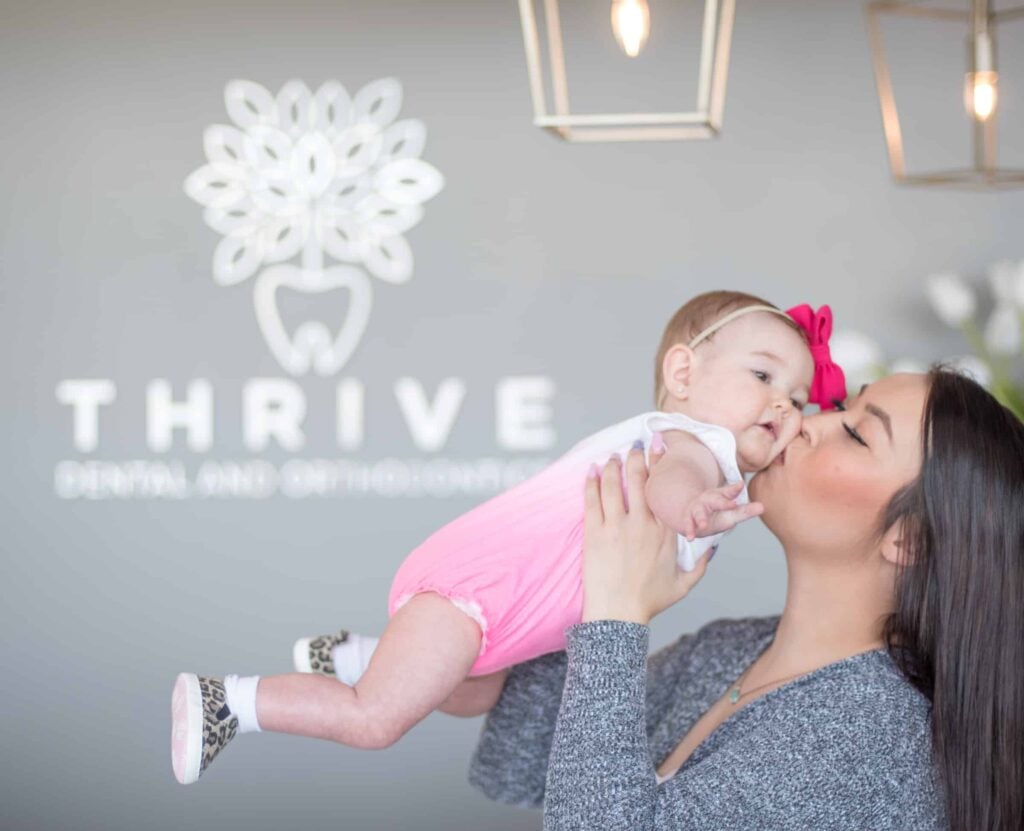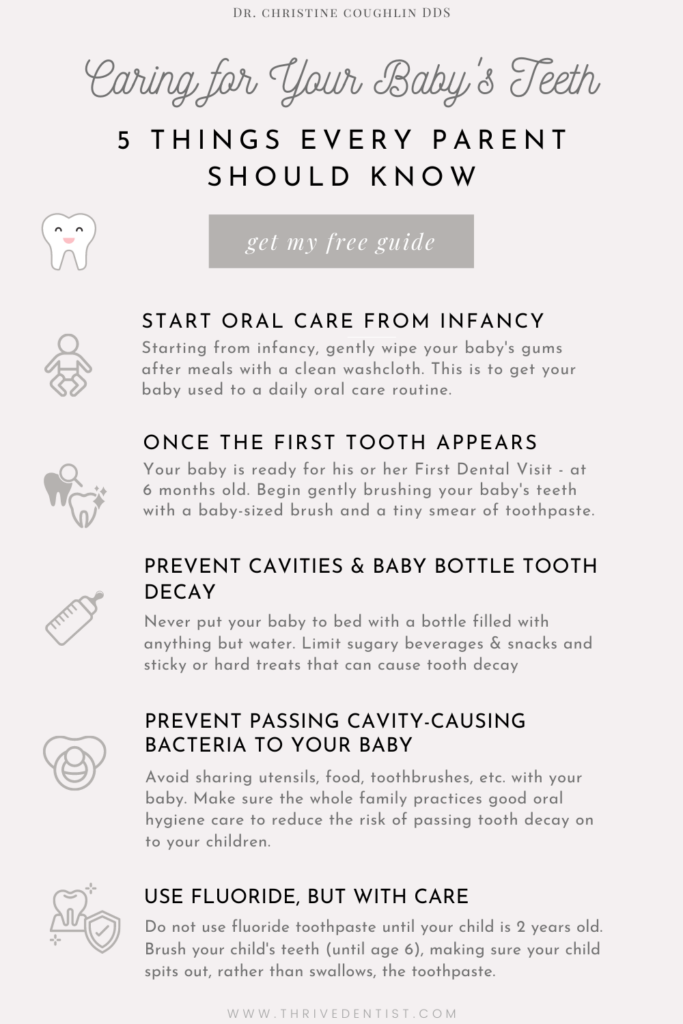by Dr. Christine Couglin DDS
Although baby teeth eventually fall out, they have a lasting effect on your child’s dental health. In this guide, you will learn five critical steps every parent should know to properly care for baby teeth to set up your child for a lifetime of excellent dental health.
Start oral care from infancy
Starting from infancy, gently wipe your baby’s gums after meals with a clean washcloth. This is to get your baby used to a daily oral care routine.
Start brushing and flossing baby teeth once the first tooth appears
The first tooth is when your baby is ready for his or her First Dental Visit -at age six months old. Once the first little tooth appears, begin gently brushing your baby’s teeth with a baby-sized toothbrush and a tiny smear of toothpaste – no bigger than a grain of rice.
It is recommended to bring your baby in to see the dentist every three months during these early developmental stages so we can make sure your baby is developing normally. And this also helps get your child comfortable with coming to the dentist for a lifelong program of dental care.
Start flossing your child’s teeth as soon as any adjacent teeth start to grow in. Another option is using a child-size floss pick, made for tiny mouths.
Prevent cavities and baby bottle tooth decay
Never put your baby to bed with a bottle filled with anything but water to This will prevent baby bottle tooth decay. Even milk has sugar in it!
Except for water, any beverages or snacks should be finished in a short time period – about one hour.
Also, limit sugary beverages and snacks and sticky or hard treats that can cause tooth decay.

Prevent passing on cavity-causing bacteria to your baby
Cavity-causing bacteria can be passed on to your baby by sharing utensils, food, toothbrushes, etc.
Making sure the whole family is practicing good oral hygiene care reduces the risk of cavities to pass on to your children.
Don’t wash off your baby’s pacifier with your mouth.
Use fluoride with caution
Check the public water supply in your area for proper fluoride levels. Too much fluoride exposure during tooth development can cause fluorosis – a condition that discolors the teeth.
Do not use fluoride toothpaste until your child is two years old. Or try a non-toxic alternative to fluoride toothpaste, such as hydroxyapatite toothpaste to fight cavities.
For kids ages 2-5:
Use only a pea-sized amount of toothpaste.
Brush your child’s teeth until he or she is old enough to do this on his or her own – around age 6, once your child can tie his or her shoes.
Supervise your child, making sure your child spits out, rather than swallows, the toothpaste.
Avoid mouth rinses until age 6 when your child has fully developed his or her swallowing reflex, so he or she doesn’t accidentally swallow the rinse.
We’ve even made a Free PDF guide for you to download and keep for your reference! Caring for Your Baby’s Teeth: 5 Things Every Parent Should Know.
Conclusion
In summary, caring for your baby’s teeth from infancy is essential to your baby’s long-term dental health. Start cleaning your baby’s mouth from infancy. Start brushing and flossing your baby’s teeth as soon as the first tooth appears. And make sure to bring your baby in for his or her first dental visit when his or her first tooth appears to ensure proper development and to get your child used to lifelong dental care. Prevent cavities and baby bottle tooth decay by watching when and what your baby consumes. Practice excellent oral hygiene care, and be careful not to pass on cavity-causing bacteria to your little one. Use Fluoride with care and supervise your child until your child is old enough to this on his or her own.
So there you have it! Now you know the five essential steps to properly care for your little one’s teeth to prevent tooth decay and set your child up for a lifetime of excellent dental health.
Bring your little ones in today so we can get them on the right track for success!




